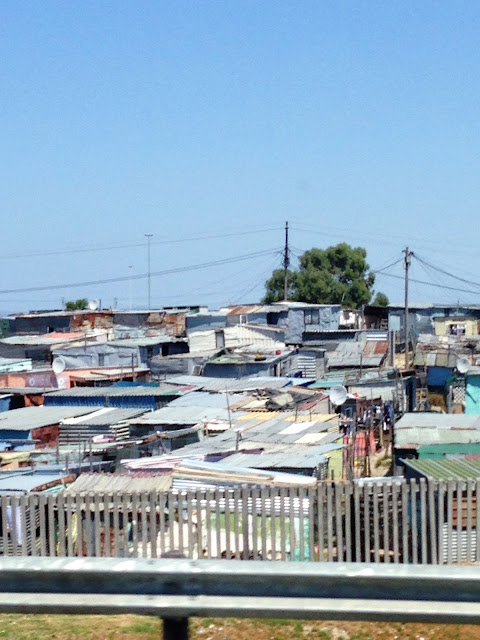Bo Kaap is an area of Cape Town that was first established by the Dutch as the slave quarter. It is situated on some of the most sought after real estate in Cape Town. At the base of Signal Hill, it is now home to the Cape's Muslim community. The houses were not always this bright and colourful. Now that the community is mostly Muslim, Ramadan is celebrated. At the end of Ramadan it is customary to dress up in bright colours. Bo Kaap residents often choose to repaint their houses in bright colours as well. Neighbors will discuss their colour choices to make sure the neighborhood maintains variety.
From Bo Kaap we travelled to the Township of Longa where we stopped at the Pass Museum which was once the entry point of workers (late 1920's) coming from other parts of Africa to find work in the Cape. This was an area designated for Blacks. The area was not all that it was promised to be. The township set-up allowed authorities to have maximum visibility and control of the residents. The dompass (translated as dumb or stupid pass) was implemented as one part of apartheid to control the lives of Black residents.
This pass had to be carried in the pocket of every Black person when travelling outside their designated area. If they were stopped by authorities they had to produce this pass or be put in jail for 3-6 months. This pass was in effect until 1988. Many protests were held to abolish the dompas, some ended in massacre. Robert Sobukwe played a key role in trying to abolish the dompas.
Township of Khayelitsha
Khayelitsha Township is home to nearly 1 million residents. After the dompas was done away with in 1988, Black workers were given a plot of land to live on. They called for their families to come join them in the Cape and quickly put together houses. The township grew quickly. Unemployment is high and with this unemployment rate comes crime. Life in this township for some consists of day to day survival.
Some community initiatives have been implemented to pass on and learn crafting skills. Many women work making beautiful weavings and printed fabrics. After learning the skills they go home and continue to produce their artwork and sell it to earn an income.







